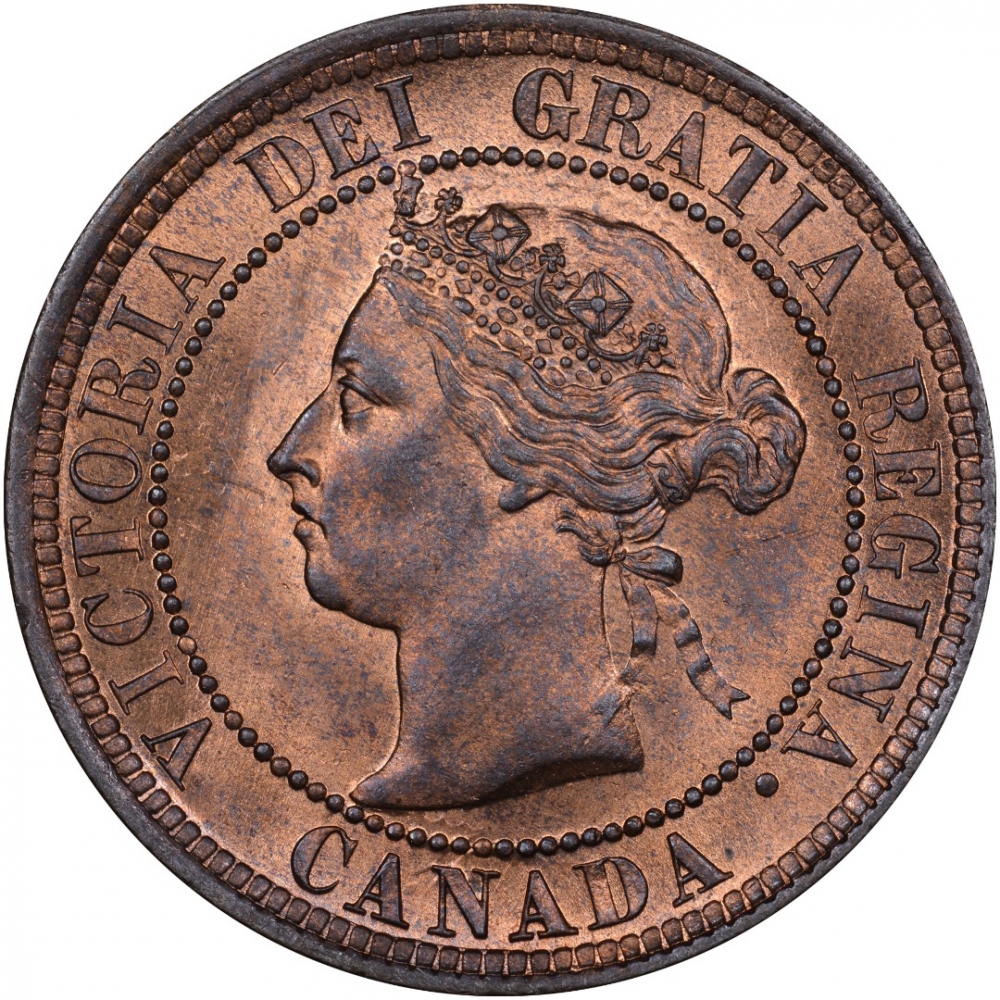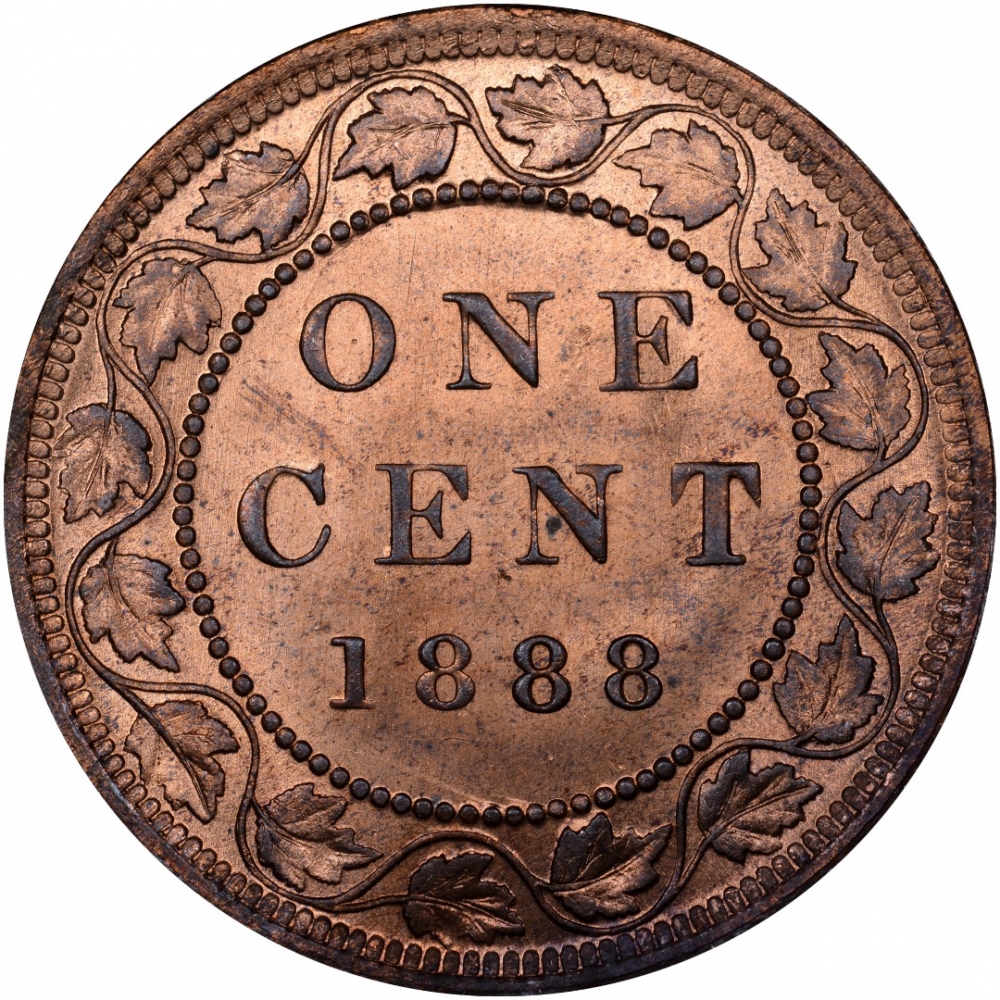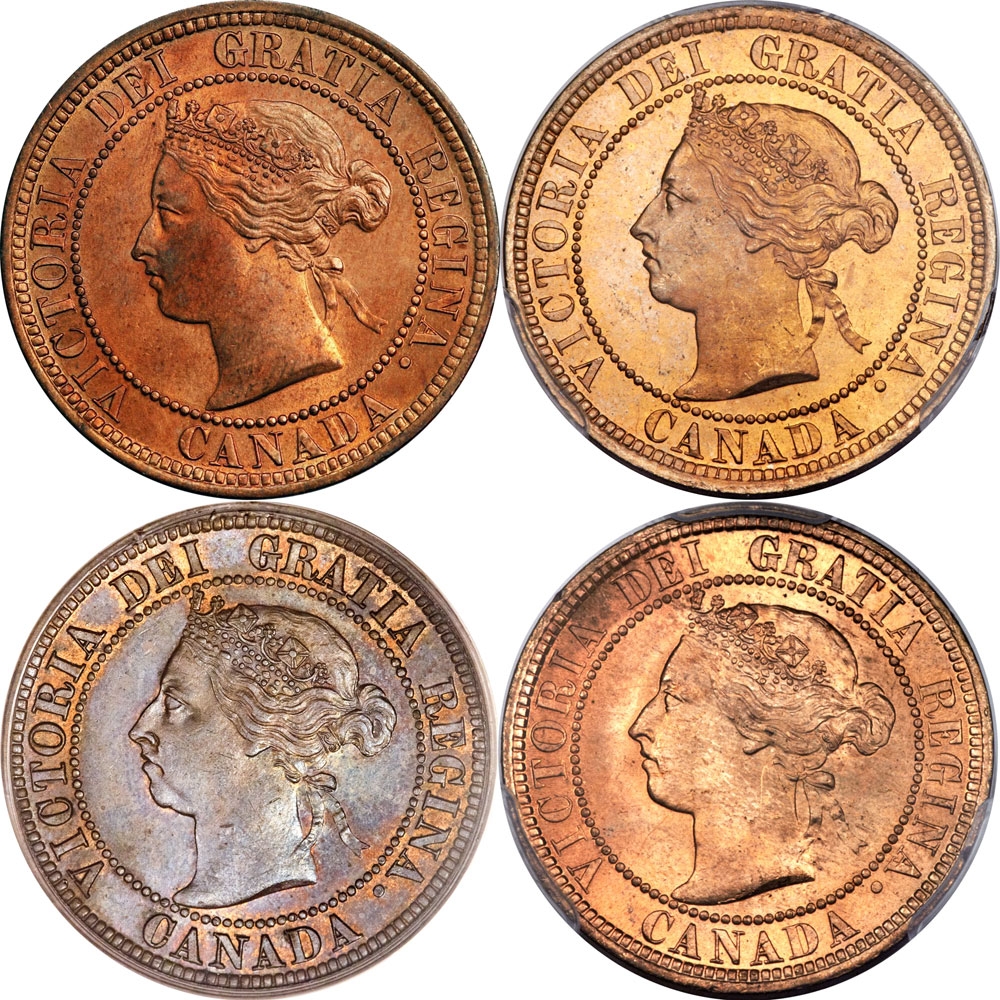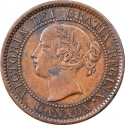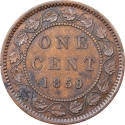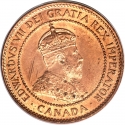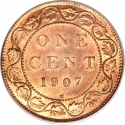You are about to finish your registration. Please check your mailbox (including spam folder). There should be a letter with a confirmation link. Check setting to make sure that your e-mail address is correct.
Send letter againDescription
The large cents of 1858–1920 were significantly larger than modern one cent coins, having a diameter of 1 inch (25 mm), which is slightly larger than the modern 25¢ piece (its diameter being 23.58 millimetres or 0.928 inches). After Confederation, these coins were struck on the planchet of the British halfpenny and were roughly the same value. Pennies were issued sporadically in the third quarter of the 19th century. They were used in the Province of Canada, New Brunswick, and Nova Scotia upon Confederation in 1867.
Victoria (1819–1901) was Queen of the United Kingdom of Great Britain and Ireland from 20 June 1837 until her death. From 1 May 1876, she adopted the additional title of Empress of India. She inherited the throne at the age of 18, after her father's three elder brothers had all died, leaving no surviving legitimate children. Victoria married her first cousin, Prince Albert of Saxe-Coburg and Gotha, in 1840. Their nine children married into royal and noble families across the continent, tying them together and earning her the sobriquet "the grandmother of Europe". Her reign of 63 years and seven months is known as the Victorian era and was longer than that of any of her predecessors. It was a period of industrial, cultural, political, scientific, and military change within the United Kingdom, and was marked by a great expansion of the British Empire.
Engravers: Leonard Charles Wyon, George William de Saulles
Obverse

|
Portrait of a more mature and portly Queen Victoria wearing a diademed crown. VICTORIA DEI GRATIA REGINA. |
|---|---|
Reverse

|
The facial value is encircled with maple leaves wrapped around a vine. ONE |
| Edge |
